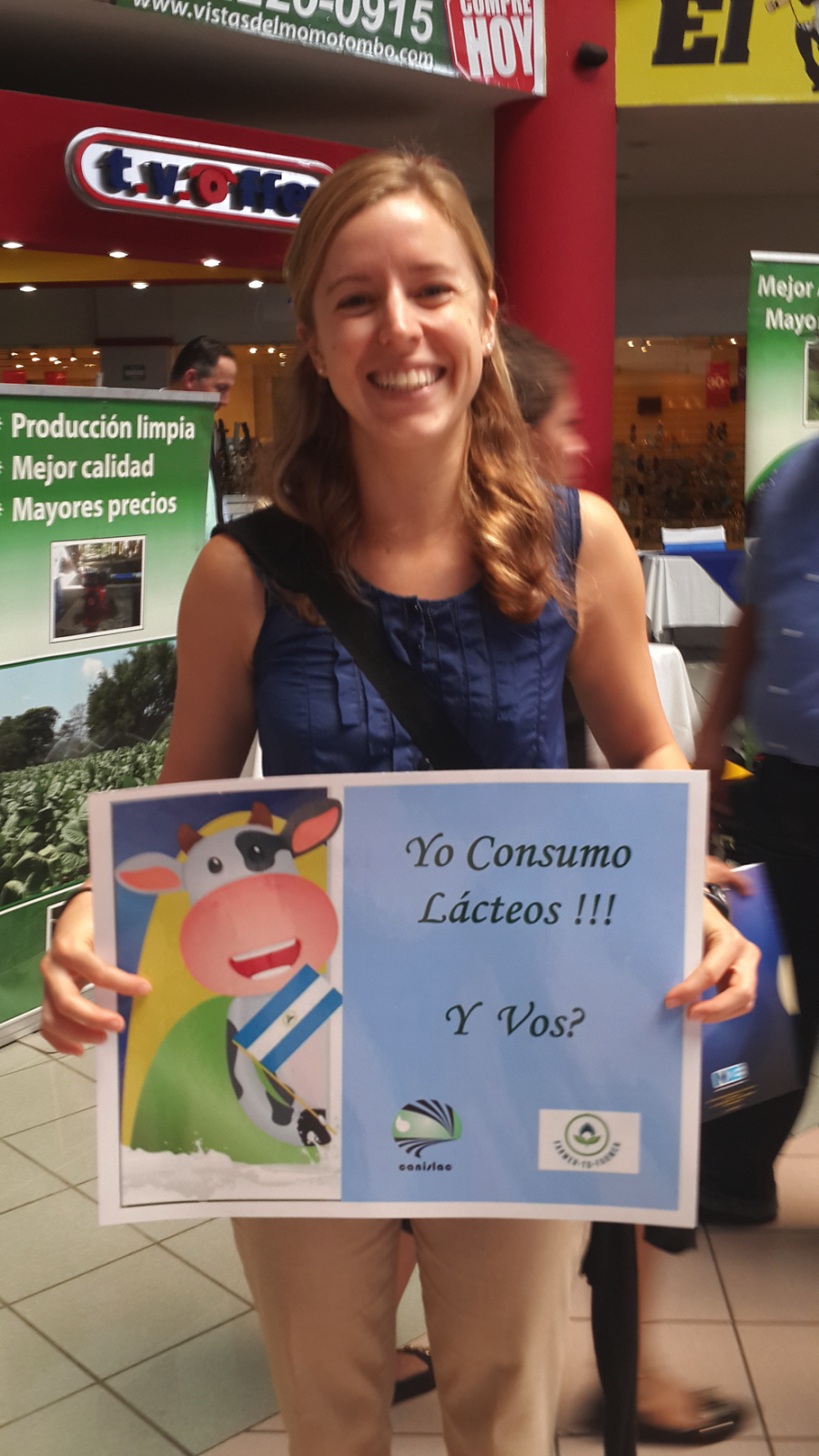Partners' F2F Volunteer Supports Planning of a New Dairy Consumption Campaign in Nicaragua
 |
Katherine Wingert,
attending the
cheese fair in Managua.
|
By Katherine Wingert
Rising rates of soda and junk food consumption are commonplace in developing countries, and Nicaragua is no exception. While Nicaragua produces more dairy than any other country in Central America, Nicaraguan dairy consumption levels are very low. Some estimates put soda consumption at five times that of milk! With obesity on the rise in Nicaragua, particularly in the capital city of Managua, there is an increasing need for interventions to change dietary habits before they become an overwhelming burden.
Rising rates of soda and junk food consumption are commonplace in developing countries, and Nicaragua is no exception. While Nicaragua produces more dairy than any other country in Central America, Nicaraguan dairy consumption levels are very low. Some estimates put soda consumption at five times that of milk! With obesity on the rise in Nicaragua, particularly in the capital city of Managua, there is an increasing need for interventions to change dietary habits before they become an overwhelming burden.
With this in mind, the Nicaraguan
Dairy Sector Chamber (CANISLAC), with the support of Farmer-to-Farmer, is working on a new yogurt and milk consumption campaign that is geared toward promoting consumption in adolescents and mothers of young
children. Because of my background in public health and behavior change, I was
invited to spend three weeks with CANISLAC in October to support them in planning the
campaign. After meeting with CANISLAC and realizing that very little is known about how parents and adolescents in Managua make food and beverage
choices, we decided to conduct interviews and focus groups with different
segments of the target populations. Doing so would lead to a better understanding of how mothers and adolescents make decisions, and what types of information or other changes might encourage
them to make healthier choices, particularly when it comes to choosing milk
over sugary beverages.
 |
Katherine Wingert, facilitating a discussion among high school
students on the factors that influence dairy
consumption.
|
While much remains to be done to make
healthier foods and beverages the easy choice in Nicaragua, a thorough understanding
of the problem is the best place to start, and the assistance of Farmer-to-Farmer is helping make that possible!

.png)

Comments
Post a Comment